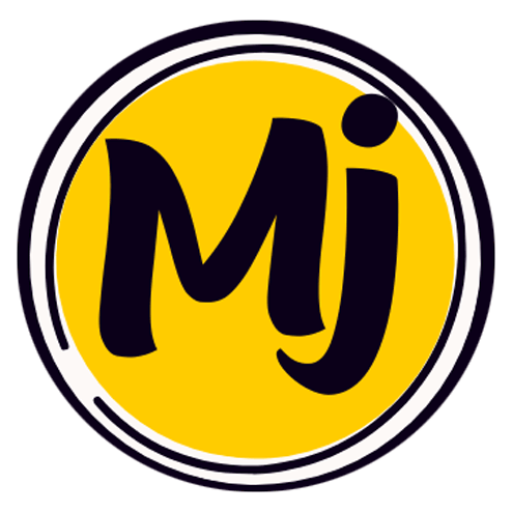Bill Gates once said, “Content is king.” This is still true today, especially for on-page SEO. By using the right on-page SEO strategies, you can make your website more credible. This can also help drive more conversions.
With the right on-page SEO, you can beat your competitors. You can also make your website more visible online.
You will learn the best on-page SEO tips to improve your Google rankings. This includes keyword research, content optimization, and meta tags. You will get a full guide on on-page SEO. It will cover all the essential tips to boost your website’s online presence.
Understanding the Foundations of On-Page SEO
Starting your journey in search engine optimization? It’s key to know the basics of on-page SEO. This means making your website better for search engines to find and rank. Content optimization is a big part of this, helping search engines get what your site is about.
To make your site’s content better, think about keywords, meta tags, and how your URLs are set up. With on-page seo tips, you can get your site to rank higher and attract more visitors. The aim is to make your content appealing to both your audience and search engines.
Important things to think about when improving your site’s content include:
- Keyword research and use
- Meta tags and title tags
- URL structure and how you link pages together
By working on these, you lay a strong base for your on-page SEO. This will help your site perform better overall.
What Makes On-Page SEO Different from Off-Page SEO
On-page SEO is different from off-page SEO. It’s about making your site’s own parts better, not just getting links from other sites. Knowing the difference helps you build a strong SEO plan that works.
Mastering Keyword Research and Implementation
To make your website more visible, you must do good keyword research. This means finding the right words and phrases to use. It’s key for making your website better for search engines.
Understanding your audience and their search habits is important. Also, look at what your competitors are doing with keywords. This helps you build a strong SEO plan.
A good internal linking strategy is also vital. It helps search engines see how your website is set up. Plus, it makes it easier for people to find what they need.
Creating urls that are easy to use is another important step. This makes your website more trustworthy and user-friendly.
Here are some tips for getting better at keyword research and use:
- Do deep keyword research to find the right words and phrases.
- Make a keyword plan that fits your business and audience.
- Use an internal linking strategy to help users and search engines.
- Make urls that are simple and easy to remember.
By using these tips and best practices in your SEO, you can get more people to visit your site.

Optimizing Title Tags and Meta Descriptions for Maximum Impact
Title tags and meta descriptions are key for on-page SEO. They can greatly affect your website’s click-through rate and ranking. To make them better, focus on what the user wants and give a clear summary of your content.
Improving your meta tags is vital for SEO. Your title tag should be short and to the point, with the main keyword. Meta descriptions should be interesting and make people want to click on your site. This way, you can make your site more visible and get more visitors.
Here are some tips to optimize your title tags and meta descriptions:
- Use relevant keywords in your title tags and meta descriptions to improve meta tags
- Keep your title tags concise and descriptive, ideally under 60 characters
- Write compelling meta descriptions that drive clicks, ideally under 160 characters
By following these tips, you can boost your website’s SEO and get more visitors. Always use the right keywords, like improve meta tags, to make your content more SEO-friendly.
Creating High-Quality Content That Ranks
To boost your website’s ranking and attract more visitors, making top-notch content is key. You can do this by adding the right keywords, using seo-friendly headers, and subheadings. This makes your content easy to read and helps search engines understand it better.
For on-page seo tips, it’s important to include relevant keywords in your writing. But, don’t overdo it. Aim for a keyword use of 1-2% to avoid stuffing. Tools can help you check your content and offer ways to make it better.
Here are some tips to make your content rank well:
- Use seo-friendly headers to organize your content and point out key points
- Optimize your content with relevant keywords, but use them naturally
- Use subheadings to make your content easier to read and break up big chunks of text
By following these on-page seo tips and focusing on making your content better, you can improve your site’s ranking. Always think about your audience and make content that’s useful, interesting, and meets their needs.
Essential On-Page SEO Tips for Better Rankings
To make your website more visible and ranked higher, focus on key on-page SEO tips. Start by optimizing your header tags, making user-friendly urls, and setting up an internal linking strategy. These steps improve your site’s structure and help search engines find and index your pages better.
A good internal linking strategy shows search engines how your site is organized. Use clear and user-friendly urls to make your site easier to use and reach. Also, make sure your site works well on mobile devices for a better user experience.

- Optimizing header tags to structure your content
- Creating descriptive and user-friendly urls for better usability
- Implementing an internal linking strategy to enhance website navigation
- Ensuring mobile optimization for a seamless user experience
By using these key on-page SEO tips, you can boost your website’s ranking. This will bring more visitors and increase your online presence. Always check and update your SEO methods to keep up with new trends and changes.
Image Optimization and Visual Content Strategy
Image optimization techniques are key in on-page SEO. They help your website load faster and rank better. By making your images smaller, your site loads quicker. This is good for both users and search engines.
To make your images better, use seo-friendly headers and alt tags. This helps search engines get what your images are about. It also makes your site easier for everyone to use. Plus, structured data markup gives more info to search engines and users.
Here are some tips for optimizing your images:
- Use descriptive file names and alt tags
- Compress images to reduce file size
- Use seo-friendly headers and descriptive text
Follow these tips to make your website more visible and ranked higher.
Implementing Structured Data Markup
As you work on your website, learning about structured data markup is key. It helps your site show up better in search results. This can bring more visitors to your site.
Schema markup is a big help here. It lets search engines understand your content better. This means your site might show up in search results more often.
One great thing about structured data markup is rich snippets. These are short summaries of your content in search results. They can include things like reviews and prices. This makes it easier for people to find what they need.

Here are some important things to remember when using structured data markup:
- Use the right schema markup for your content.
- Check that your structured data is working right.
- Keep your schema markup up to date with your content changes.
By using these tips and adding structured data markup to your SEO plan, you can make your site more visible. This can lead to more visitors and a stronger online presence. Always test and update your schema markup to get the best results for your site.
Mobile Optimization Techniques That Work
Improving your website’s ranking and user experience is key. Mobile optimization is crucial because most users visit websites on their phones. Your site must work well on mobile devices, load fast, and be easy to navigate.
Speed optimization is vital for mobile sites. A slow site can cause users to leave quickly. To speed up your site, compress images, minify code, and use browser caching. Tools like Google PageSpeed Insights can help find and fix speed issues.
- Optimizing images and videos for mobile devices
- Using responsive design to ensure a consistent user experience across devices
- Implementing mobile-first indexing to improve search engine rankings
- Conducting regular speed optimization audits to ensure fast loading speeds
By using these techniques, you can make your website better for mobile users. A well-optimized site is important for better search rankings and more visitors.
Advanced On-Page Optimization Strategies
To make your website better, you need advanced on-page optimization. This means technical SEO. It helps your website show up better on search engines. By doing this, you can get higher rankings and more people will see your site.
Good seo tips include making your images better, using links to help users, and creating great content. This content should speak to your audience. These steps can help your site rank higher and get more visitors.
Here are more tips to think about:
- Use header tags to structure your content and highlight important keywords
- Optimize your website’s meta tags, including title tags and meta descriptions
- Use alt tags to describe your images and improve accessibility
By using these advanced strategies and tips, you can boost your website’s ranking. Always think about your audience and make sure your content is top-notch. This will help you stand out online.
Conclusion: Implementing Your On-Page SEO Strategy for Long-Term Success
Mastering on-page SEO is crucial for your website’s success. It boosts your site’s visibility and drives long-term success. By optimizing your website content and improving your meta tags, you can get better search engine rankings. This attracts more qualified visitors to your site.
The work doesn’t end here. Your on-page SEO strategy needs constant effort. You must stay patient and adapt to search engine changes. Always review and update your strategies, keep up with trends, and focus on a great user experience.
By using the tips from this article, you’re on the right path. Your SEO goals are within reach. With on-page optimization, your online presence will grow. Your brand will get the recognition it deserves.



